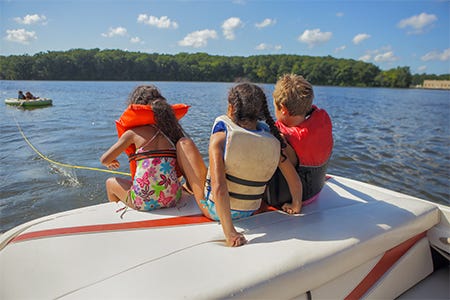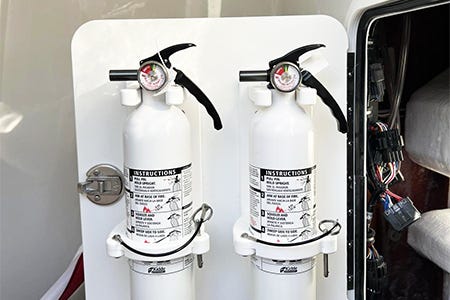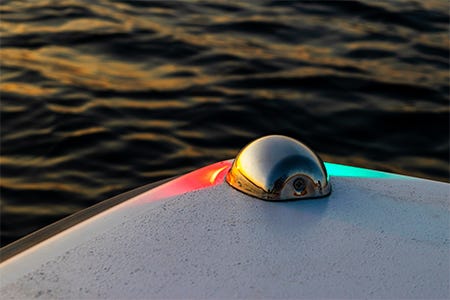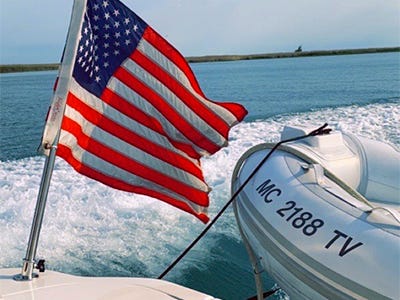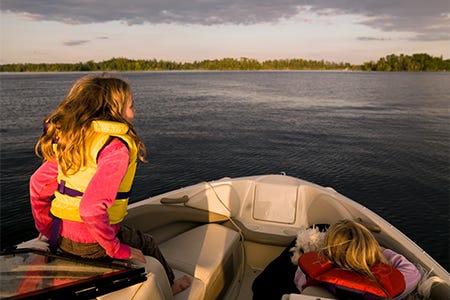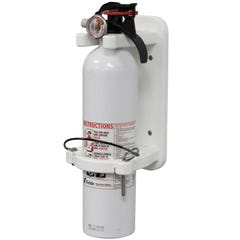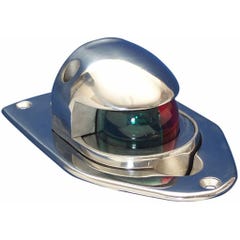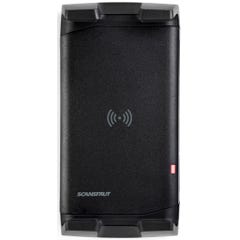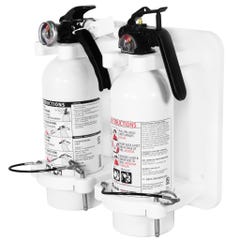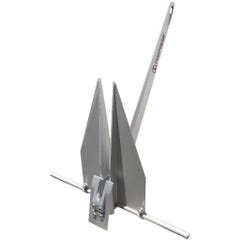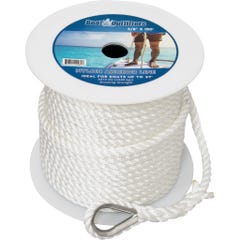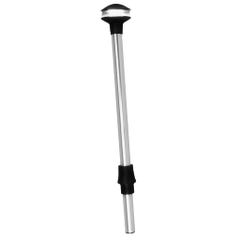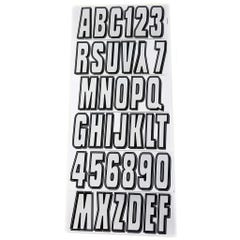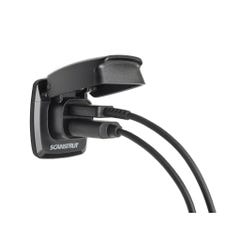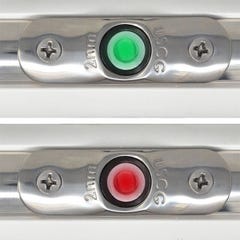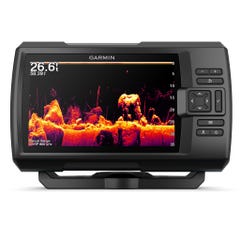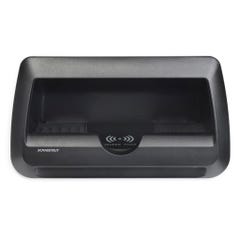Outfitting Your New Boat
May 25, 2023 6 min read


There’s nothing quite like the excitement that comes with the purchase of a new boat. The freedom, mystique and pride of being “captain” of your own vessel make buying a boat a different experience than buying a new car or other necessity. The first-time purchase of a new — or new-to-you — boat opens the door to a whole new world of experiences and adventures, a world many people never get to experience.
In all of that excitement, however, there lies a hard reality: buying a boat IS different from buying a car, and boats require very different equipment to be both legal and safe. Many first-time boat buyers learn the hard way about the equipment they need when they are stopped on the water by marine patrol or a DNR officer and given a ticket for being under-equipped. If you are on the verge of taking ownership of your first boat, take the time to make sure you are ready — and legal — for your maiden voyage.
Contents
- 1. “Must Have” Equipment
- 1.1 Type I, II, III or V Personal Flotation Device (PFD):
- 1.2 Throwable PFD:
- 1.3 Fire Extinguisher:
- 1.4 Visual Distress Signals:
- 1.5 Sound Producing Device:
- 1.6 Nighttime Navigation Lights:
- 2. State Requirements
- 2.1 Titling and Registration Requirements:
- 2.2 Trailer Titling and Registration:
- 2.3 Vessel Titling and Registration:
- 2.4 Title:
- 2.5 Registration Numbers:
- 2.6 Registration Decal:
- 2.7 Registration Paperwork:
- 3. Should-Have Equipment
- 3.1 Additional Emergency Items:
- 3.2 Docking and Anchoring Equipment:
- 3.3 Communication and Location Equipment:
- 4. Picking your PFD
- 5. Above and Beyond
“Must Have” Equipment
Let’s take a look at what you need in two categories: what you MUST have to meet basic legal requirements, and what you SHOULD have to protect your vessel and its passengers from harm. Keep in mind that the size of your vessel and your specific state may have different or higher requirements than what are listed below, so take time to do your research before you go out on the water.
The items below are based on federal requirements for power boats up to 40 feet. Your state may have additional requirements beyond these:
Type I, II, III or V Personal Flotation Device (PFD):
Most people know these as life jackets, but the technical term is more accurate; a personal flotation device may or may not look like a life jacket.
You must have at least one Type I, II, III or V PFD for each person on board that matches their weight requirements.
For adults, wearing the PFD is often optional, except that Type V PFDs must be worn to “count” on an open boat or when in the open cockpit of a boat with a cabin.
In most states, children under a certain age are required to wear their PFD anytime the boat is underway (not anchored, moored or beached). PFDs that are not worn must be “readily accessible,” meaning they should not be stored in bags, in locked compartments or have other gear stowed on top of them. Accessible means … truly accessible!
Throwable PFD:
Also known as a “Type IV” PFD, most states require a throwable flotation device in addition to personal PFDs that are worn. These throwable PFDs generally come in the form of rings or square, foam-filled cushions.
Unlike wearable PFDs, which the Coast Guard says must be “readily accessible” if not worn, throwable PFDs must be “immediately available” — a higher standard that means throwables should be free for instant use, not in a locker.
Fire Extinguisher:
Federal requirements mandate a type B-I fire extinguisher on most boats under 26 feet and either two type B-I or one type B-II fire extinguisher on boats 26 to 40 feet without a “fixed” (built-in) fire extinguishing system.
Even if your boat is exempt, it may be wise to consider having one.
With proper mounting these relatively small devices are inexpensive, take up very little space and can make a big difference in an emergency for either your own vessel or someone else’s.
Visual Distress Signals:
Visual distress signals, such as flares, strobe lights or flags, are required on all vessels 16’ or longer, and must be in good working order, accessible, and current (not expired).
Boats 16’ and longer are required to carry a minimum of either three day-use and three night-use signals or three combination day/night signals.
Sound Producing Device:
Most recreational boats have a built-in horn, but not all. If yours does not, you’re required to have a separate whistle, horn or other sound-producing device.
Nighttime Navigation Lights:
If you are operating your boat before sunrise or after sunset, you are required to have the proper navigation lights for your vessel. These lights can be built into your boat or added on.
At a minimum, this includes red and green side lights, properly mounted, and an all-around white light that. Larger boats have additional requirements, and there are different requirements for boats that are underway vs. boats anchored or at rest.
State Requirements
In addition to federal Coast Guard requirements, each state has its own laws that often go above and beyond federal regulations. Each state is different, so make sure you research your state-specific laws, but below are some basic requirements shared by most states.
Titling and Registration Requirements:
A common surprise for new boat owners is that the hull and trailer of their new boat are treated independently of each other in most states. In some states, even the outboard must be titled separately.
Trailer Titling and Registration:
Not all states require a title for your trailer, but all states require trailer registration. Trailer registration is displayed via the license plate, and a title may be required to obtain that registration.
Purchasing a trailer across state lines can present challenges if the prior state does not require titles. Before you even get on the road, you need to ensure you have met your state’s requirements for the titling and registration of your boat trailer.
Vessel Titling and Registration:
Vessels must be registered in the owner’s state of residence. While each state has its own requirements, the information below is common among most states:
Title:
Most states require the titling of your vessel’s hull, which is a different process than registration. You are not required to have the title onboard with you, but you will need it to register your vessel. Some states also require an outboard title.
Some states also require an outboard title.
Registration Numbers:
Unlike cars, boats don’t have license plates. Instead, they have registration numbers affixed to the hull. Your vessel’s registration number (often a combination of letters and numbers issued by the state and specific to that vessel) must be displayed on your vessel in compliance with your state’s laws. These laws can be very specific, dictating the size, color, spacing and location of these letters.
Registration Decal:
In addition to your vessel registration numbers, you must display a state-issued decal indicating the registration period for the vessel. State requirements will dictate the location, but generally, these are displayed next to the registration number. This may not be available when you first register your boat, and in most states, a temporary registration will be acceptable for a specified period of time while the decal is being sent.
Registration Paperwork:
You must have, on-board at all times, your registration paperwork which will be issued to you by your state. A temporary registration will allow you to operate your vehicle until your official registration paperwork is sent.
Should-Have Equipment
Federal and state laws dictate the minimum requirements for boat safety, but should not be relied on solely to ensure the safety of your occupants. There are some basic, common-sense items you should purchase for your new boat, regardless of state or federal requirements. Here are a few to consider:
Additional Emergency Items:
Having back up options can stop emergency situations in their tracks. For example, even if you have an electric bilge pump on your boat, you should have a manual or hand-operated pump in the event your primary pump fails or can’t keep up.
It’s also a good idea to have a towing service membership in case of engine trouble, and a paddle to help get you out of busy channels while you are waiting for help. Finally, minor injuries are nearly inevitable on a boat, so a basic first aid kit should be maintained in your dry storage with bandages and topical medications.
Docking and Anchoring Equipment:
It’s always a good idea to have plenty of rope (or “line”) on board for docking and anchoring. Short, dock lines with pre-spliced loops can make docking much simpler than trying to use a single, long coil of line.
An appropriately sized primary anchor and rode (the rope and/or chain connecting the anchor to the boat) is a critical piece of equipment. Having a second smaller anchor can minimize your boat’s swing when anchoring in shallow waters.
Communication and Location Equipment:
Knowing where you are, the water depth, and being able to communicate are basic rules of good seamanship. Basic GPS/depth finder combinations are relatively inexpensive but critical equipment for any boat. If you are going offshore where cell phones can’t be relied on, a VHF is a must. If you are staying inshore and have cell coverage, make sure you have a charger available to keep it going.
Your new boat will open up a world of new adventures for you and your passengers, and as the owner of that boat, you are the captain of your own — and their — destinies while you are on the water. Taking the time to ensure your boat is properly equipped from both a legal and common-sense perspective will ensure that all of your future adventures are good ones.
Unexpected events, emergencies and even injuries are common out on the water.
Unexpected events, emergencies and even injuries are common out on the water. Good captains are prepared in advance to avoid these events whenever possible and to address them quickly and effectively if they do occur.
Picking your PFD
Many boat owners purchase the most basic (and often uncomfortable) versions, solely to meet the legal requirements, but consider the intent of the law when you purchase these.
PFDs keep people from drowning when something unexpected happens, but only if they are worn. An uncomfortable or impractical lifejacket is more likely to be in a compartment than worn, and if there is an unexpected collision, your occupants won’t have time to grab it.
Inflatable type II PFDs are not only more comfortable for the wearer, but also have more buoyancy than the traditional orange foam PFD. These can be a great way to maximize safety and comfort for your occupants.
Above and Beyond
Below is equipment that goes beyond legal requirements but belongs on nearly every boat.
Additional Emergency Items:
- Hand-operated bilge pump and/or bailing bucket
- First aid kit
- Paddle
- Towing service membership
Docking and anchoring equipment:
- Dock lines
- Anchor and anchor rode
- Mushroom or stern anchor
Communication and location equipment:
- Basic electronics - GPS and sounder
- Phone/device charger
- VHF
- Insurance w/ documentation
- Some kind of communication - phone (charged!) and/or radio

